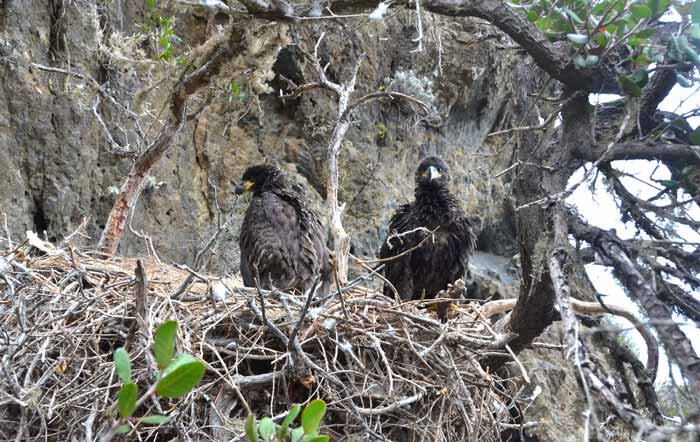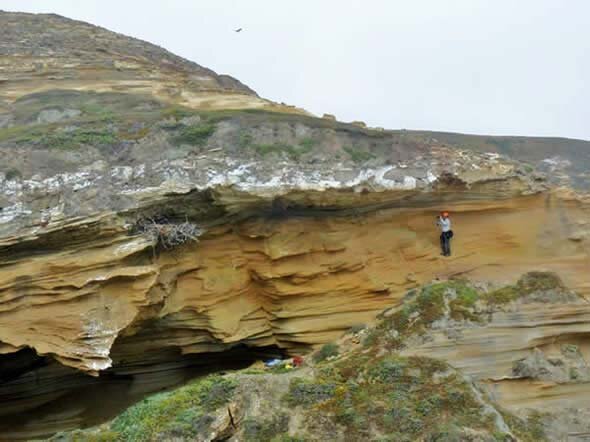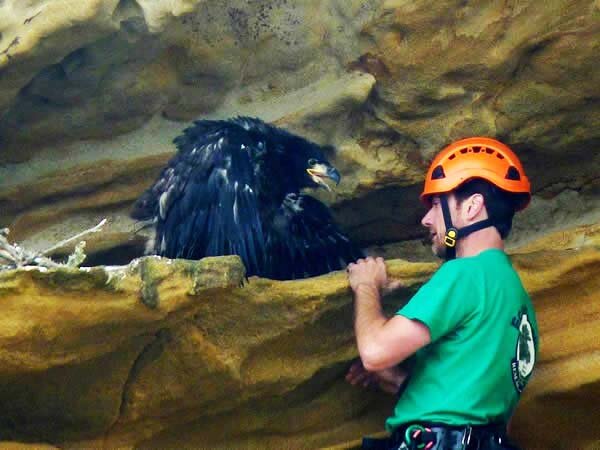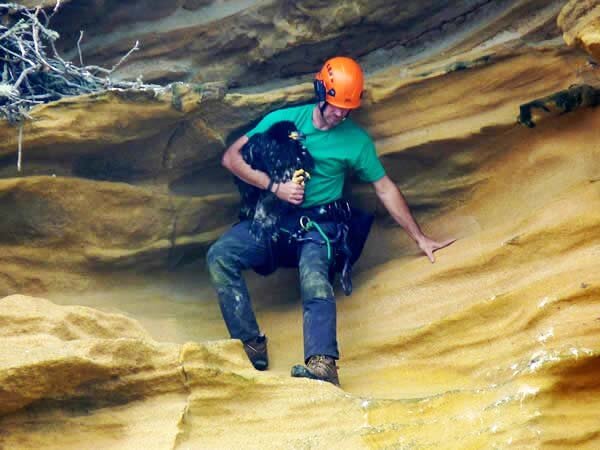Bald Eagle
Haliaeetus leucocephalus
Bald eagles were present on all the California Channel Islands until their decline and disappearance by 1960 due to exposure to DDT. Between 1947 and 1961 large amounts of DDT contaminated sludge was dumped near Catalina Island. In 1980, The Institute for Wildlife Studies began its first project, reintroducing bald eagles to Catalina Island. The first eggs were laid in 1987, but broke soon after. Concentrations of DDE (a product of the breakdown of DDT) in remains of eggs removed from failed nests indicated DDT as the cause of nest failure. For twenty years, IWS maintained the reintroduced population through manipulations of eggs and chicks at nest sites. In the egg manipulation process, fragile eggs laid by the DDE affected birds were replaced with artificial eggs. The adult eagles continued to incubate the artificial eggs while the real eggs were relocated and artificially incubated at our incubation facility on Catalina Island. Chicks that hatched from these removed eggs, or those produced by captive adults at the Avian Conservation Center (San Franciso Zoo) or by wild birds, were then fostered back into the nests. In 2006, the first successful natural nest hatching occurred on Santa Cruz Island. Since then the bald eagle population on the California Channel Islands has continued to grow, and IWS has directly contributed to their recovery, with an estimated 45 bald eagles on the Channel Islands in 2017.
Reintroduction and careful monitoring led to the delisting of the bald eagle from the Endangered Species Act in 2007, though it remains protected under the Migratory Bird Treaty Act and the Bald and Golden Eagle Protection Act. IWS continues to monitor the Channel Islands bald eagle population to detect and remedy any future population declines. IWS needs funding to continue monitoring nest sites. Ongoing nest monitoring will help us understand reasons behind individual nest successes, and will contribute to invaluable long-term studies. Challenges remain, with some pairs continuing to have failed nests, and the possibility that ocean DDT levels may be rising again. Ongoing monitoring, cameras (https://www.iws.org/iws-chat) and social media outreach increase public awareness and support of programs that protect bald eagles’ ongoing recovery.
Past Bald Eagle Projects
Also check out our Interactive pages for Live Nest Cameras, Slideshows and more.
Visit the Support Bald Eagle & Peregrine Falcon Restoration and Research Project page to support this project.

These two bald eagle nestlings were the first to be banded in a nest on San Clemente Island. The size of the nest suggests it has been used in prior years and these are likely not the first produced at this location.

A biologist approaches the nest at Trap Canyon on Santa Rosa Island; one of many nests where juvenile bald eagles are given identification bands, wing tags and transmitters, allowing us to monitor their movements.



Literature Cited
Chartrand, A. B., S. Moy, A. N. Safford, T. Yoshimura, and L. A. Schinazi. 1985. Ocean dumping under Los Angeles Regional Water Quality Board permit: A review of past practices, potential adverse impact and recommendations for future action. California Regional Water Quality Control Board, Los Angeles Region, March 1985 47 p.
Gress, F., R. W. Risebrough, D. W. Anderson, L. F. Kiff, and J. R. Jehl, Jr. 1973. Reproductive failures of double-crested cormorants in southern California and Baja California. Wilson Bulletin 85:197-208.
Kiff, L. F. 1980. Historical changes in resident populations of California islands raptors. Pages 651-673 in D. M. Power (ed.), The California islands: Proceedings of a multidisciplinary symposium. Santa Barbara Museum of Natural History, Santa Barbara, CA.
Risebrough, R. W., F. C. Sibley, and M. N. Kirven. 1971. Reproductive failure of the brown pelican on Anacapa Island in 1969. American Birds 25:8-9